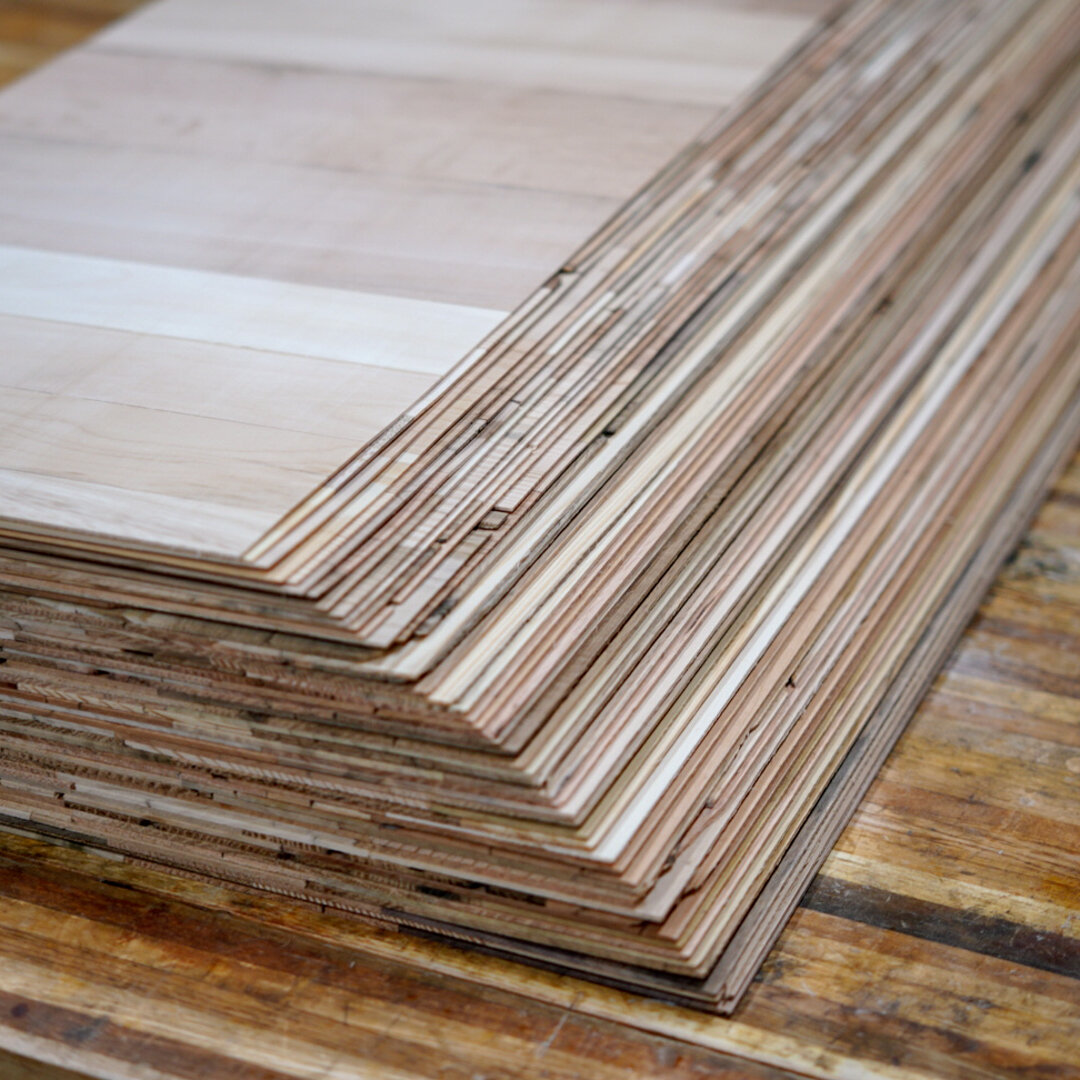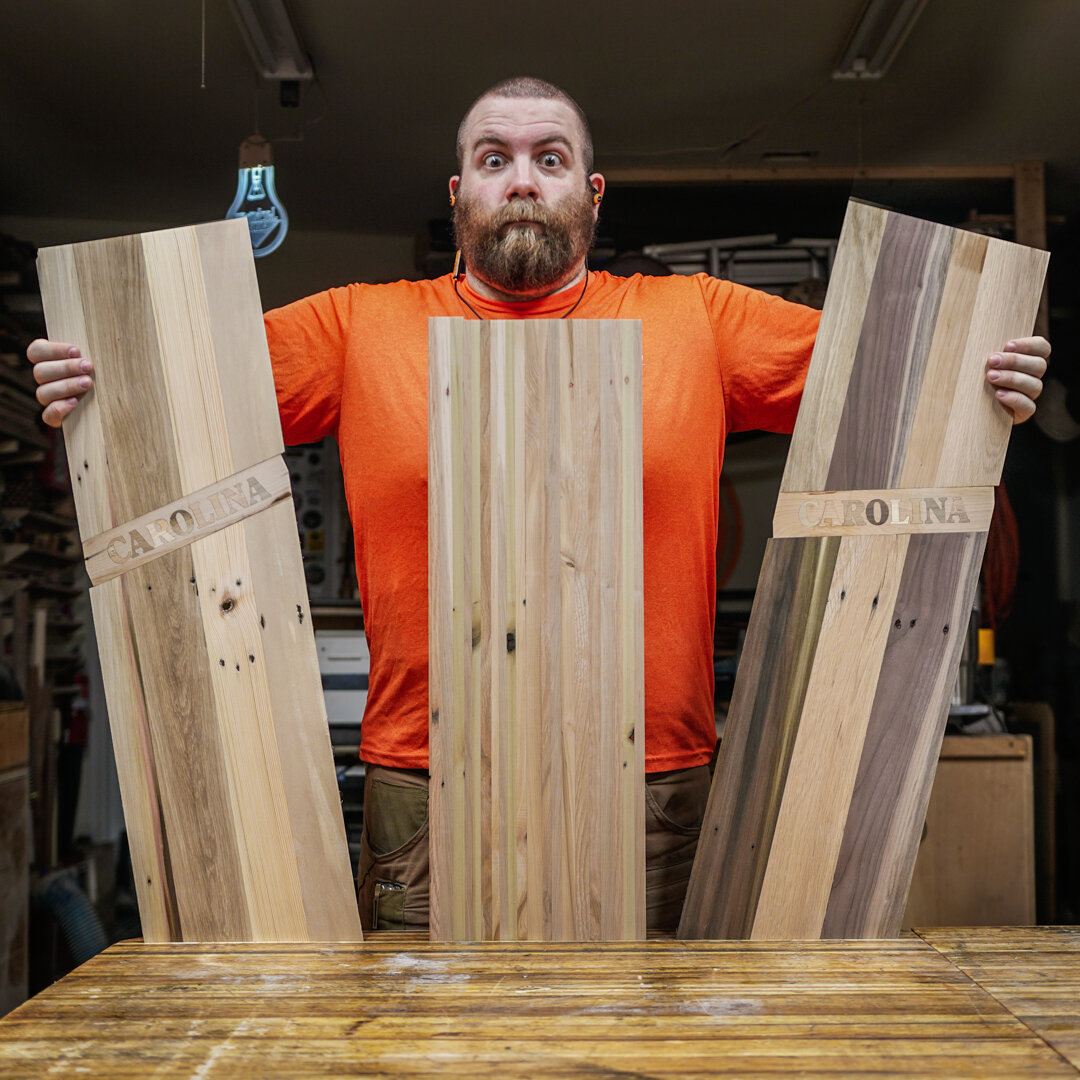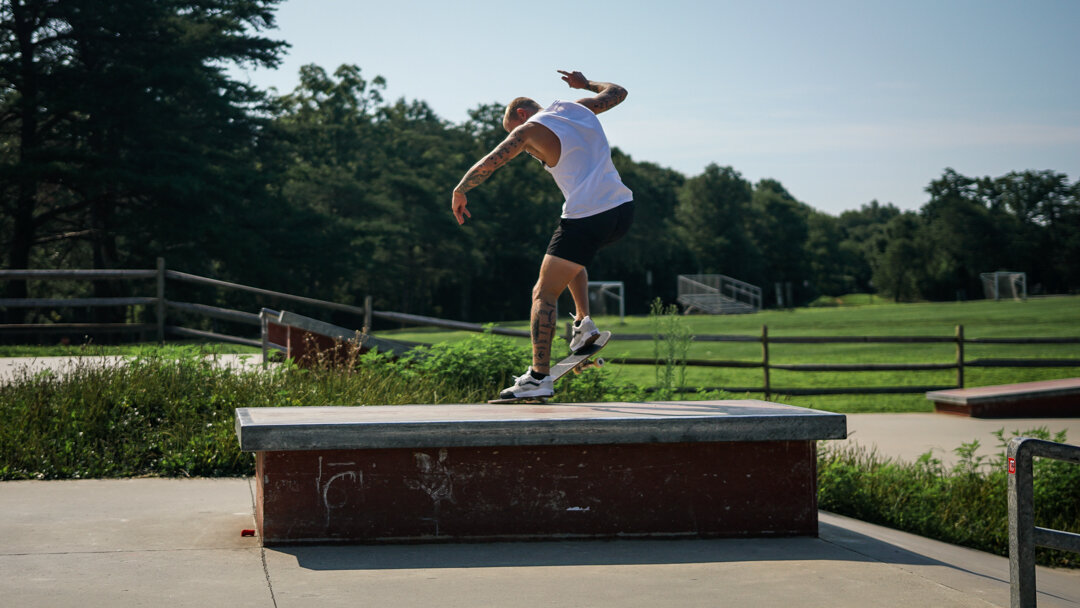
Pallet Skate Decks
By Paul Jackman

August 2022
‘With pallets, there are a lot of blemishes to deal with, with the nail holes, cracks, and knots.’
What was the most challenging part in turning wooden pallets into skateboard decks?
Creating your own wood veneers is a very tricky operation unless you have massive industrial equipment, which I definitely don’t. Also, the fact that I used pallet wood instead of fresh lumber, complicated things even more, with it being a lot less uniform of a material. With pallets, there are a lot of blemishes to deal with, with the nail holes, cracks, and knots. Luckily with the build up of plys, the final deck is plenty strong anyway, it’s just the creation of the veneers where you have to deal with those irregularities.
How many sheets did you use?
The boards are sandwiched together from the standard 7 plys, with 5 long grain and 2 cross grain. The long grain veneers are 1/16″ thick and the cross grain are a little thinner at 1/20″ thick.


What shape did you use for the mold?
I ended up with 2 different shapes for my batch of 10 actually. Half of the decks are just made with the standard shape from Roarockit, and the other half, I custom shaped similar to the other pre-shaped foam blocks, but with slightly more contour.
One big surprise watching your ‘how to’ video is the way you pressed the different sheets. You used vacuum instead of weight. Seems like the easier choice. Any drawbacks though?
Vacuum pressing of veneers is definitely the way to go. With the vacuum, you get even clamping pressure across the whole surface of the deck, so you don’t get any inconsistencies in the shape of the deck. With just clamps, or with clamping a form to either side, you risk not getting even pressure on the whole deck. The only downside I can think of with the vacuum bag, is that the dry time is a bit longer. Because the whole deck is inside of an air tight bag, you don’t get the air flow that you would get with an open air glue up, and that air flow helps significantly with removing the moisture from the glue. With a regular open air glue-up I can remove the clamps within a couple hours, but these laminations stayed in the back for 24 hours, and then I let them dry for another day in the open air before working on them.


‘I felt bad, but he reassured me that it had nothing to do with the boards. Maybe he was just being nice though.’
Jeff Greer stress tested the boards. What was his verdict?
He loved them! He said they felt just like a regular skate deck, maybe slightly heavier, but that’s it. The decks didn’t suffer any damage, even with sliding and grinding, and the only thing that broke was Jeff unfortunately. I was impressed that Jeff’s tricks didn’t seem to be affected at all by the decks, because they are made of many different species of wood with varying densities, compared to a regular skate deck that is just maple throughout.
He broke his ankle in the process which is unfortunate.
I felt bad, but he reassured me that it had nothing to do with the boards. Maybe he was just being nice though. (laughting).
How much are those decks going for? Do you still have some left?
I actually still have 3 of the batch of 10 available. They range from $450-$550 depending on the complexity of the pattern in the veneers. And this will more than likely be the only skateboard decks that I ever make, because once I make a project, I move on to making other things.




